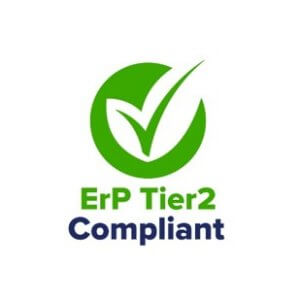The newest version of The Ecodesign and Energy Labelling legislation came into effect on 1st July 2016. The EcoDesign Directive, which is part of the legislation, is specifically about energy saving. Its objective is to help operators reduce energy consumption. UK law requires all manufacturers of refrigeration equipment being sold in Europe to develop more energy-efficient products. Companies must conform with the Minimum Equipment Performance Standards (MEPS) to be EcoDesign compliant.
What are the reasons behind this?
On the larger scale of things, The Ecodesign Directive is a European framework put in place to help the European Union achieve its 2020 targets to:
• Deliver 20% energy efficiency improvement by 2020
• Lower CO₂ emissions by 20% by 2020
• Increase the share of renewables by 20% by 2020
However, there are still aims in terms of the industrial refrigeration industry. Chiller equipment produces greenhouse gas emissions, which is bad for the environment. This means an introduction to The EcoDesign Directive will have a great impact on cutting carbon emissions to achieve Europe’s carbon reduction targets by 2050.
How is chiller efficiency performance measured?
As part of the requirements of MEPS all equipment must go through tests so that it can be ranked by its efficiency levels.
The first of its standards uses a colour-coded system. The coloured labelling shows products graded from A to G, or from A+++ to G, where A (or A+++) is the best. All refrigerated equipment must have at least a G label to be sold within Europe.
Secondly, there is two straightforward sets of figures established by the directive:
a) Seasonal Energy Performance Ratio (SEPR) for industrial process chillers
b) Seasonal Space Cooling Energy Efficiency (SSCEE) for comfort cooling chillers
SEPR and SSCEE must be declared and technical documentation provided by the manufacturers. However, there is not a set energy rating label. The SEPR and SSCEE figures are based on more realistic conditions. They provide the refrigeration end-user with more data to identify the most efficient solution.
Equipment design
Lastly, at the design stage, equipment is measured in different product categories that are separated in to groups called LOTs. These two groups are based on the key issues and legislation that affect industrial refrigeration end-users:
a) ENTR Lot 1 (Refrigeration and Freezing equipment, in particular Medium Temperature (MT) and Low Temperature (LT) process chillers and condensing units)
b) ENER Lot 21 (High Temperature (HT) process chillers and comfort cooling (HVAC)).
These groups are then split further into two stages:
Tier – 1 (2018): MEPS are not achieved by ~80%
Tier – 2 (2021): MEPS are not achieved by ~88%
These stages are following a scheduled programme of action, which started in July 2016 and will conclude on 5th May 2020 for LT and MT chillers. And by 1st January 2022 for HT and Comfort chillers. We are happy to say that our i-Chillers have already been Tier 2 certified a year ahead of target. This means our customers are going to be getting the most energy efficient chillers on the market. It also helps promote our commitment as a company to reduce the environmental impact our products have.
How customers benefit from using more energy efficient equipment?
• More efficient chillers will help organisations manage their Carbon Reduction Commitment compliance and avoid penalties.
• Businesses could potentially serve it as a significant marketing tool, as public perceptions of “green” companies take an increasing role in purchasing decisions.
• Customers will have a noticeable reduction to their energy bill.
How can customers benefit from The EcoDesign and Energy Labelling Directives?
• They provide end users with clear information that allows them to choose more efficient products. In return, this increases the level of protection of the environment.
What technology will be introduced to make the products compliant?
• Temperature control with presence detection or open window detection
• Distance control via an app
• Adaptive start control to suit the requirements of the user
Built in features like this help the heater to know when it should be on. For how long for and if it should turn itself off. Chillers are typically high energy consuming machines. Therefore, small improvements in operating efficiency can make big savings in energy consumption costs. An introduction of this technology would be beneficial to customers in the future.







